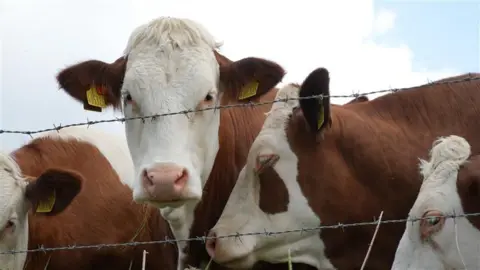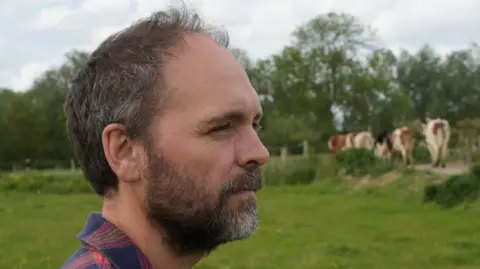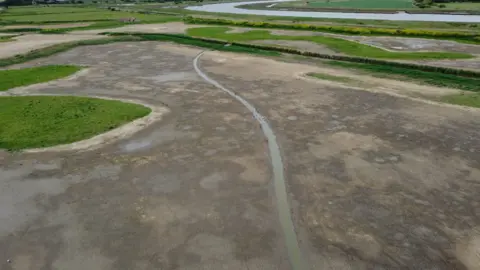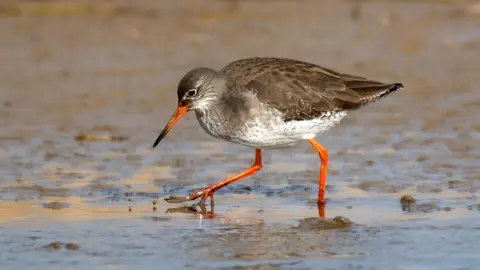Farmer at 'crunch point' after spate of dry weather
 John Fairhall/BBC
John Fairhall/BBCFarmers and conservationists feared they were at a "crunch point" after recent dry weather had seriously affected crops and wildlife.
Parts of the country have seen weeks of non-stop sunshine, and until rain started to fall over the weekend, it was set to be the driest spring in the UK in a century, according to the Met Office.
Jonny Crickmore of Fen Farm Dairy near Bungay, Suffolk, said he was at a "knife point" and feared his crops would not be "any good".
Aaron Howe, from RSPB Boyton and Hollesley Marshes, added that Ore estuary waders had also been suffering due to it becoming "barren, dry and empty".
 John Fairhall/BBC
John Fairhall/BBCAt Fen Farm Dairy, some of their cheeses required vast amounts of milk.
For this, its herd of cattle require lots of grass, but Mr Crickmore said this was in very short supply due to dry weather.
He explained their first cut of silage - grass cut and stored in a pit to feed to the cattle over the winter - was down by a third, and they may have to resort to buying in expensive feed.
"Since mid-April, [there's been] no rain at all, five weeks, it's getting to a crunch point.
"We're getting a knife edge. I'm not sure if any of the crops are going to be any good.
"We are now going into our reserve food - if that happens, the problem then becomes much more severe."
 John Fairhall/BBC
John Fairhall/BBCMr Howe said the Ore estuary was usually a perfect site for breeding waders like avocet, redshank and lapwing, but the weather had left it barren.
"It is very sad because we spent a lot of time and effort last year completing a new lagoon system, but having the driest spring for a very long time has really impacted the site," he explained.
"These breeding waders are being forced to find other sites to nest, and if this happens more and more frequently, the available habitats will become less and less, and it will impact the populations and they will slowly decline."
 John Fairhall/BBC
John Fairhall/BBCDespite recent rain over the last few days, this spring was the driest in Suffolk since 2011.
March and April, meanwhile, were the sunniest months in East Anglia since records began in 1910.
Honor Chiswick, a Met Office meteorologist, said the position of the jet stream - "the fast flowing ribbon of air" high up in the atmosphere - had been to blame.
"Across the eastern parts of England, it has been exceptionally dry and sunny," she said.
"We have seen the jet stream kind of meander towards the north of the country and that means high pressure can build to the south of it," she said.
"That turns into a blocking high and that means it is blocking any weather systems moving in from the Atlantic, and thus it has been a very dry season.
"It is not totally unusual, but what is unusual is that the blocking high pressure has stuck with us for so long and could potentially mean we see some records broken."
 Steve Everett
Steve EverettFollow Suffolk news on BBC Sounds, Facebook, Instagram and X.
